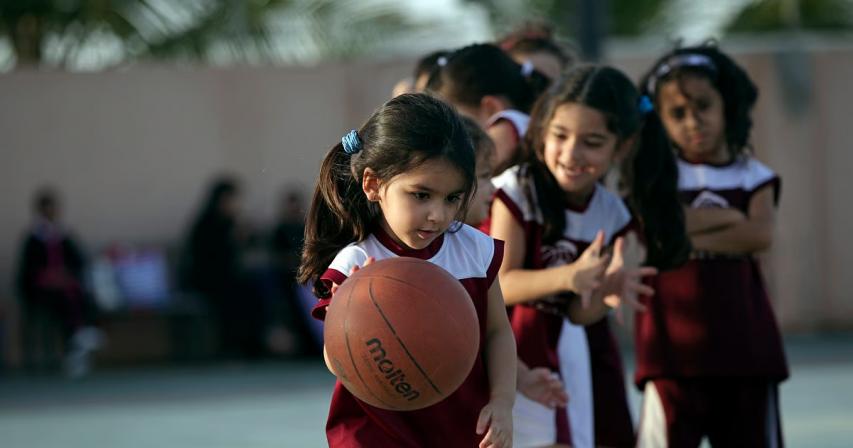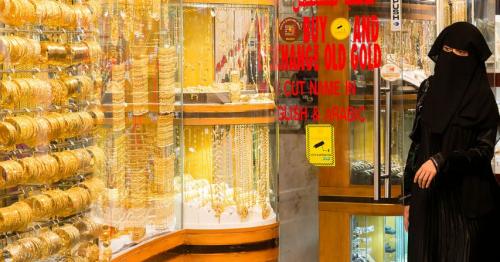UAE: Female students face more sports-related injuries, say doctors

Doctors in the UAE note that female students sustain more sports-related injuries owing to their distinct anatomy and hormonal characteristics which predispose women to specific injuries.
Along with the possibility of suffering injuries at any phase in life, the age bracket of 12 to 17 years is particularly risky. This shows that school based sports programmes require active injury prevention protocols, as highlighted by doctors.
Jena Kiwan tells her story, “I rolled my ankle during a PE class – the injury happened when I slipped while trying to catch a pass in a basketball game. The fall really did a number on my ankle. The school was quick to act as they called my parents straight away and made sure that I was taken care of medically.”
The expatriate from Egypt went on to say that, “After undergoing all the necessary X-rays, the attending orthopedic surgeon told me that my injury was indeed a fracture of the ankle bone, that needed rest in a cast for between six to eight weeks, but then later the injury couldn’t heal without physiotherapy rehabilitation, so the recovery plan included rehabilitation for ten sessions after the cast was removed’s attending physician ….”
Dr. Jena remarked, “The reviewing of safety protocols and prevention of sports injuries in school children should take absolute priority in risk management planning.”
“This is of particular significance for women students since they seem to be at a greater risk of experiencing such incidents.
What are the most common injuries?
The finger fractures, knee sprains, left ankle sprains or strains, head concussions, and other such issues are most common in children who play basketball. This has been scientifically proved by Dr Kiran Sasi, Prime Hospital’s specialist hand surgeon.
Dr Sasi further elaborated by explaining several muscular problems that exist in girls, which make them more prone to muscle related problems as compared to boys.” Those suffering from knock knees are also bound to have difficulty when it comes to their knees or ankles.”
As elucidated by healthcare professionals, children aging between 5 to 15 years old may suffer from fractures due to direct force applied by a ball, or forceful contact with a teammate. Furthermore, with the addition of excessive exercise, chronic pain may develop around the bone growth areas such as the elbow or knee joints.
Naed Osteochondrosis, this condition usually gets better over time when the patient reaches the age of 15.
Children with loose ligaments, especially of the knee and hip joint, have a higher probability of osteoporosis than their peers. Dr Ahmed Sherif Ban, Burjeel Day Surgery Center, Al Reem Island’s specialist orthopaedic surgeon explains,” Those suffering with vitamin D deficiency, whether we know it or not, slows down the healing process and recovery from minor fractures.”
"I would like all children to be healthy and active, as well as participate in sports on a regular basis. Bone health is akin to bank account; investing when young guarantees health in adulthood," he went on to say.
Some schools in Dubai have, rather uncommonly, engaged a strength and conditioning coach to prepare students' bodies in advance of sports training.
"Rather, we believe that prevention is better than cure. For this reason, we have a full-time strength and conditioning coach and all children in our active school (Years 7 to 9) are provided with physical conditioning appropriate for the demands their bodies will experience while playing sport. This alleviates age-related and growth-related injuries through active interventions within the school curriculum," remarked Mike Lowery, sport director, GEMS Metropole School – Motor City.
"Recovery is also part of our individual athlete program for national and international level athletes. Custom warm-up and stretching protocols as well as collaborating with other professionals, for physiotherapy for instance, enable us all to streamline what we provide to students so that no gaps exist for them to succeed.”
Gendered approach
Along with this method, the institution's recent sponsors, ‘Kula Recovery Zone’ which specializes in ice baths and cold-water based therapy solutions, have installed two professional cold-water recovery units.
“Students have access to this free of charge. Besides these free resources, we conduct seminars on foam rolling, sleep, and post-exercise nutrition so that students' bodies are primed for strenuous physical activity. Moreover, this phenomenon is also gendered as there are boys and girls who have different requirements. Girls, for instance, tend to achieve physical maturity earlier than boys, thus their bodies have certain specific needs.”
The school's strength and conditioning programs are therefore gendered and age-specific in formulation so that all children are optimally catered for at the appropriate age of development. “In the same way, our nutritional programs are also sport and gender specific because, once again, there are differences in requirements because of the physiological changes in the teenage years, and the essential micronutrients that are needed must be taken into consideration,” Lowery commented.
“We do not only look at training elite student-athletes, but rather how to keep them trained throughout,” said Nav Iqbal, Principal/CEO at GEMS Metropole School – Motor City. “With advanced technologies and our specially designed Recovery Lab, injury prevention strategies are integrated while peak performance is promoted.”






Comments